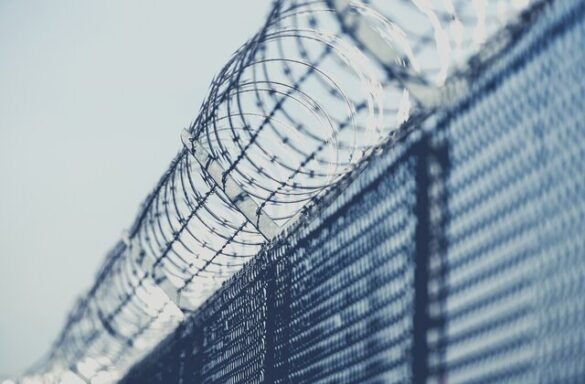Table of Contents
The United States incarcerates more people per capita than any country at Incarceration, including much larger ones like India and China and totalitarian states like Russia. Even seemingly progressive states like New York and Massachusetts lock people up at rates far above those of countries that can afford to be more generous with the lives of their citizens.
1. Louisiana
Often called America’s prison capital, Louisiana leads the nation in imprisonment rates. This is despite the fact that it has one of the lowest overall crime rates in the country.
This is a problem that can be hard to see because of an alarming lack of data and a convoluted carceral landscape where local jails function as prisons. However, Vera’s incarceration datahub provides illuminating parish-level research that paints an ominous picture of how the state punishes its residents. For example, a neighborhood in New Orleans named Bogalusa has an incarceration rate far higher than the city as a whole.
2. Texas
The Lone Star State often gets a bad rap for its supposedly conservative culture of “frontier justice,” but it was actually a late entrant to the prison-building race that began in earnest around 1980. Its incarceration rate peaked in the 1990s and has since fallen, reflecting the fact that it prioritizes alternatives to incarceration over strict enforcement of criminal law.
If Massachusetts was a country, it would have the seventh-highest imprisonment rate in the world. That is how many prisoners its criminal justice system holds per 100,000 residents.
3. Florida
Florida’s prisons and jails house a large number of people. This measure of incarceration includes prisoners in state and federal prisons as well as those in county and city jails.
Using these data, the Prison Policy Initiative estimates that Florida incarcerates 795 people per 100,000 residents. That’s higher than any democratic country in the world.
High imprisonment rates have significant economic and social costs for the state of Florida. They reduce children’s educational outcomes and rob families of income-earning adults. They also impose high barriers to criminal justice reforms.
4. Georgia
With a relatively low population, Georgia still manages to lock up more people than many larger states. Its prison numbers are a result of both its jail-friendly legal system and social factors that contribute to crime.
The state’s incarceration rates are also high because of its war on drugs. Fears of rampant crime led to legislation requiring judges to abide by mandatory minimum sentencing rules, reducing the ability of prosecutors to bargain for less jail time. As a result, more people were sentenced to long terms.
5. Alabama
In Alabama, a high prison population is largely due to stringent sentencing laws and tough-on-crime policies like three-strikes. But the state’s crime rate has fallen in recent years, showing that less incarceration can also improve public safety.
Every year, 90,000 people are booked into local jails in Alabama. Wanda Bertram, a senior communications strategist at Prison Policy Initiative, says this number understates the extent of the problem.
Black men are imprisoned at a higher rate than white men in the state, and they make up most of the state’s prison and jail population. This racial disparity is exacerbated by a lack of opportunities outside the prison walls.
6. Mississippi
The small mid-Atlantic state houses a surprising number of people in prison. Its incarceration rate is 518 per 100,000 and saw a slight increase from 2015 to 2016.
Mississippi incarcerates more people than any other state or country. Its prison system costs taxpayers more than $360 million a year and is still growing.
Empower Mississippi argues that while incarceration plays a necessary role in our justice system, it should be done in ways that improve public safety. The group stresses that more than 90% of prisoners will eventually return to society and that it is important to prepare them for success.
7. Arkansas
In the state of Arkansas, even minor crimes like drug possession can land you in prison. Moreover, many offenses are over-criminalized and people from marginalized communities tend to be over-represented in the state’s prison population.
Lawmakers can take steps to reduce over-incarceration by passing truth-in-sentencing reforms and ending catch-and-release policies. The state also can lower its recidivism rate by making sure all parolees follow their terms of release.
8. South Carolina
With 139,319 people behind bars, Texas holds the top spot on this list of states with high imprisonment rates. Florida follows closely with 84,121 prisoners locked up in its prisons. Georgia houses a significant number of people in prison as well, despite having a smaller population compared to the larger states.
The state of Tennessee has a murder problem, and this is likely due to a mix of factors including poverty, inequality, and urbanization. The murder rate is also elevated in cities like Memphis and Nashville.
9. Tennessee
Across Tennessee, people locked in local jails are disproportionately black. They are also young and have a low level of education. This makes the COVID-19 pandemic a crucial moment to divest from systems that criminalize poverty and invest in solutions that empower communities to thrive.
If Tennessee were a country, its incarceration rate would rank higher than any other founding NATO member. This is unacceptable. Together, we can transform our system so it reflects the needs of people across Tennessee. This report by Vera and Free Hearts shows how.
10. New Mexico
New Mexico has high imprisonment rates, particularly in its juvenile justice system. Moreover, children with parents who are incarcerated experience many negative effects, including increased stress and poverty.
The Pelican State is often referred to as the prison capital of the world. The prison population in Louisiana reaches 512 prisoners for every 100,000 people. In addition, the state incarcerates more people in its county jails than most other states. That’s according to a study by the Prison Policy Initiative. Its data includes pre-trial detention and county jail populations.

